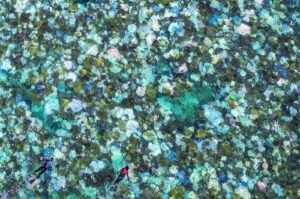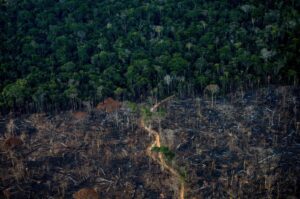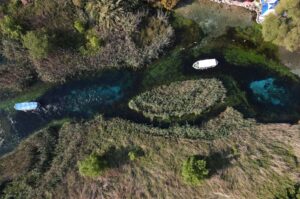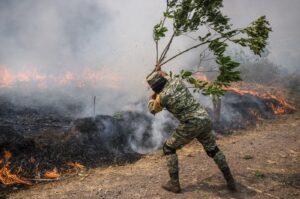Zombie viruses from permafrost may sound like the plot of a horror movie, but they are a real public health threat as the Arctic thaws due to climate crisis.
Scientists have revived ancient viruses from permafrost and discovered they could still infect living single-celled amoebae.
While it is unclear whether these viruses could infect animals or humans, the researchers assert that permafrost viruses should be considered a public health threat.
Permafrost is a layer of soil that remains completely frozen year-round, covering 15 percent of the land in the Northern Hemisphere. However, due to human activities, global temperatures are rising, causing permafrost to melt rapidly.
This phenomenon is unearthing a host of ancient relics from viruses and bacteria to woolly mammoths and an impeccably preserved cave bear.
READ MORE:
NASA: Antarctica losing ice faster than thought
‘Reviving zombie viruses’
In 2014, French professor Jean-Michel Claverie started publishing research on reviving ancient viruses, or “zombie viruses” as he calls them.
He found strains of the frozen virus from a few permafrost sites in Siberia.
The oldest strain, which dated back 48,500 years, came from a sample of soil from an underground lake, while the youngest samples were 27,000 years old.
One of the young samples was discovered in the carcass of a wooly mammoth.
Claverie and his team were able to revive several new strains of “zombie” viruses and found that each one could still infect cultured amoebas.
He said this should be regarded as both a scientific curiosity and a concerning public health threat.
READ MORE: ‘Climate change ‘multiplies’ Siberian heatwave 600 times
Risk of ancient bacteria
It’s not just viruses. Ancient bacteria, too, could be released and reactivated for the first time in up to two million years as permafrost thaws.
That’s what happened, scientists think, when outbreaks of the bacterial infection anthrax appeared in humans and reindeer in Siberia in 2016.
That may be a “more immediate public health concern,” according to Claverie.
The current research on frozen viruses like Claverie’s ‘zombie’ virus is helping scientists understand more about how these ancient viruses function and whether, or not, they could potentially infect animals or humans.
Their findings make it clear that it is crucial that action is taken to address the climate crisis, in order to prevent the release of more ancient viruses and bacteria from the permafrost, which could have serious implications for global public health.
READ MORE: Billionaires turn to reap benefits from melting glaciers



















































Be First to Comment